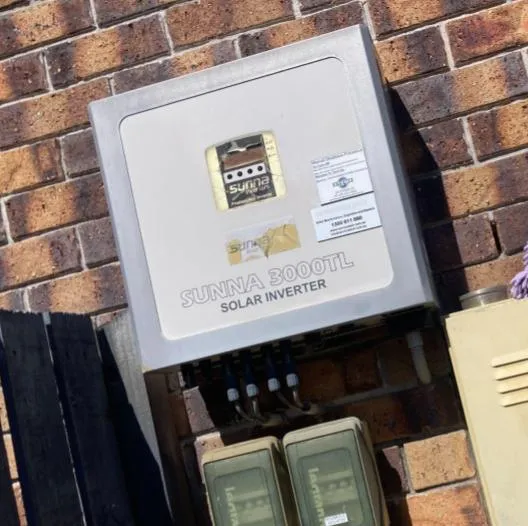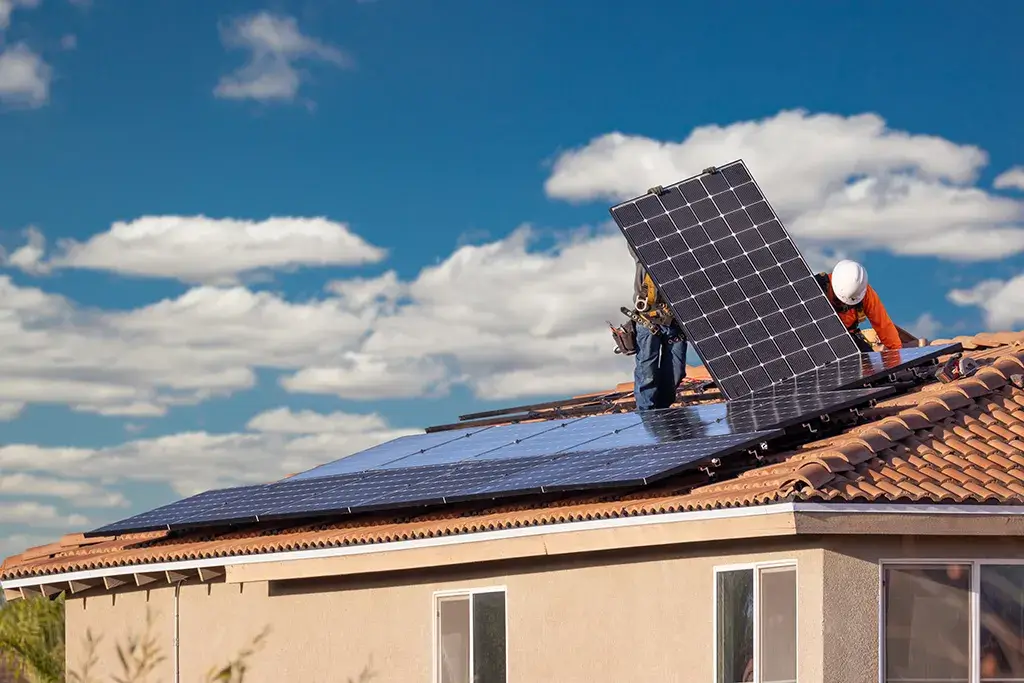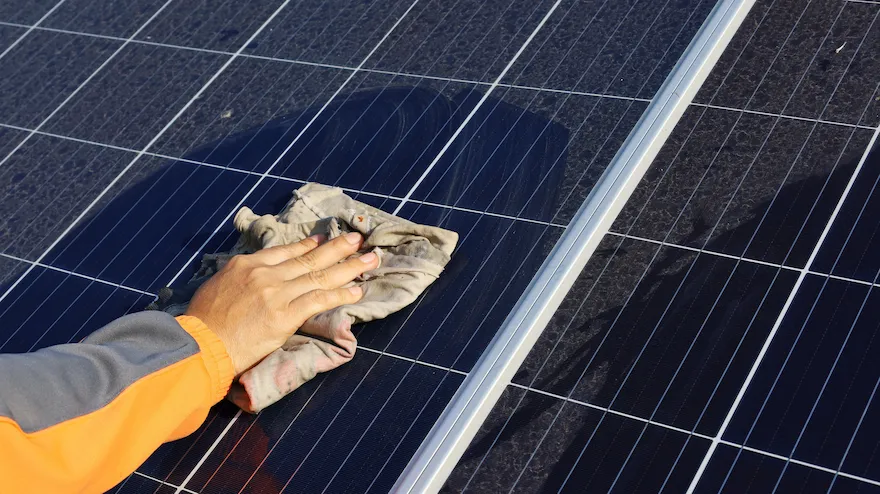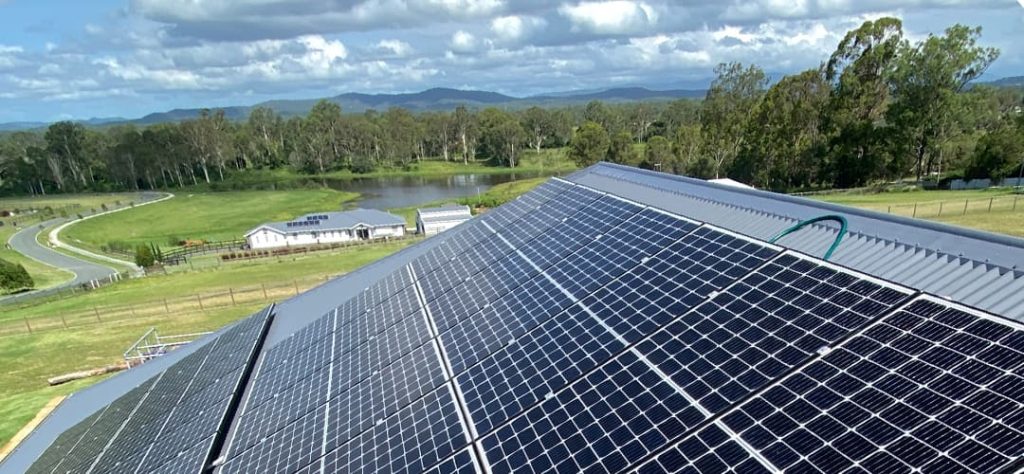Solar energy systems consist of several key components, one of which is the solar inverter. But what is a solar inverter, and why is it such a crucial part of a solar energy system?
In this article, we dive into the world of solar inverters, explaining their role, the different types, and their importance in converting sunlight into usable electricity. Whether you’re a homeowner with solar panels on your roof or someone considering solar energy, understanding the solar inverter can help you understand your system better or help you decide on the right system to install. Let’s shed some light on this pivotal component.
The Role of a Solar Inverter
Solar panels capture sunlight and convert it into direct current (DC) electricity. However, most of our household appliances and the electrical grid run on alternating current (AC). This is where the solar inverter steps in. The solar inverter is arguably one of the most important components in your whole solar system.
Solar inverters are a power electronic device that regulates the flow of electricity. Their primary role is to convert the DC electricity generated by solar panels into AC electricity. This transformation is crucial because it makes the energy compatible with the power grid and the devices in your home. So, when your solar panels generate electricity during the day, the inverter ensures that you can use that electricity to power your home and send any excess energy back to the grid.
In essence, a solar inverter is the bridge that connects your solar panels to your home’s electrical system and the grid. Without it, the electricity generated by your solar panels would remain in a form unsuitable for household or grid use. It is important to keep your solar inverter repaired and in tip top shape.
Understanding the Types of Solar Inverters
There are three main types of solar inverters: string inverters, microinverters, and power optimisers. The choice between these types depends on various factors, such as your system size, shading conditions, and budget. To comprehend the role of a solar inverter better, let’s explore these primary types further:
String Inverters:
String inverters, also known as central inverters, are a common choice for residential and commercial solar installations. These inverters are typically installed in a shaded area or near the electrical panel. They connect to several solar panels, typically organised in strings, and convert the DC electricity produced by the entire string into AC power.
The advantages of string inverters include their cost-effectiveness and efficiency. They are suitable for solar arrays without shading issues, making them a popular choice for many homeowners.
Microinverters:
Microinverters have gained popularity for their ability to optimise the performance of each individual solar panel. Unlike string inverters, where all panels are connected in series, microinverters are attached directly to each panel. This means that each panel operates independently, maximising energy production and efficiency.
The benefits of microinverters are particularly evident in situations with shading issues. Even if one panel is partially shaded, the others can continue to generate power efficiently. This contrasts with string inverters, where shading on one panel can reduce the entire string’s output. Similarly, as they work independently, if one panel is damaged it won’t impact the effectivity of the overall conversion and output, ensuring your system can still generate effectively until you can get the damage repaired.
Microinverters are a bit more expensive than string inverters, but they can offer a higher return on investment, especially in locations with varying sunlight conditions or in the case of panel damage.
Power Optimisers
Power optimisers are an option that sits between the string inverters and the microinverters as they have similar features to both. Like microinverters, power optimisers have a component that sits underneath each individual panel. However, they work by optimising the current and then like the string inverters they send it to a single central inverter that converts the current from DC to AC. This makes them more efficient than their string counterpart as the production from a single panel won’t slow the overall system as each panel has its own optimiser.
As this type of inverter gains popularity, the prices are dropping; however, they currently sit between string inverters and microinverters. Overall, their efficiency trumps string inverters and they are cheaper than microinverters, and thanks to their individual components you can monitor each panel independently.
Each of these options has its own set of pros and cons, so it’s important to consider all of your options and discuss your options with your local solar electrician when considering solar panel installation or replacement.
The Importance of a Reliable Solar Inverter
In summary, solar inverters play a vital role in your solar energy system by converting the DC electricity generated by your panels into AC power for your home and the grid. Their efficiency and reliability are critical factors in maximising your solar system’s performance.
Investing in a high-quality, well-maintained inverter ensures that you get the most out of your solar energy system. Regular maintenance and monitoring can help identify issues early and prevent any interruptions in your clean energy production.To conclude, solar inverters are the unsung heroes of solar power systems, quietly converting sunlight into electricity and delivering eco-friendly energy to your home. Understanding their importance and types empowers you to make informed decisions about your solar installation. To learn more about solar inverters or to have yours maintained, repaired or replaced, you can call our team of experienced solar electricians.







